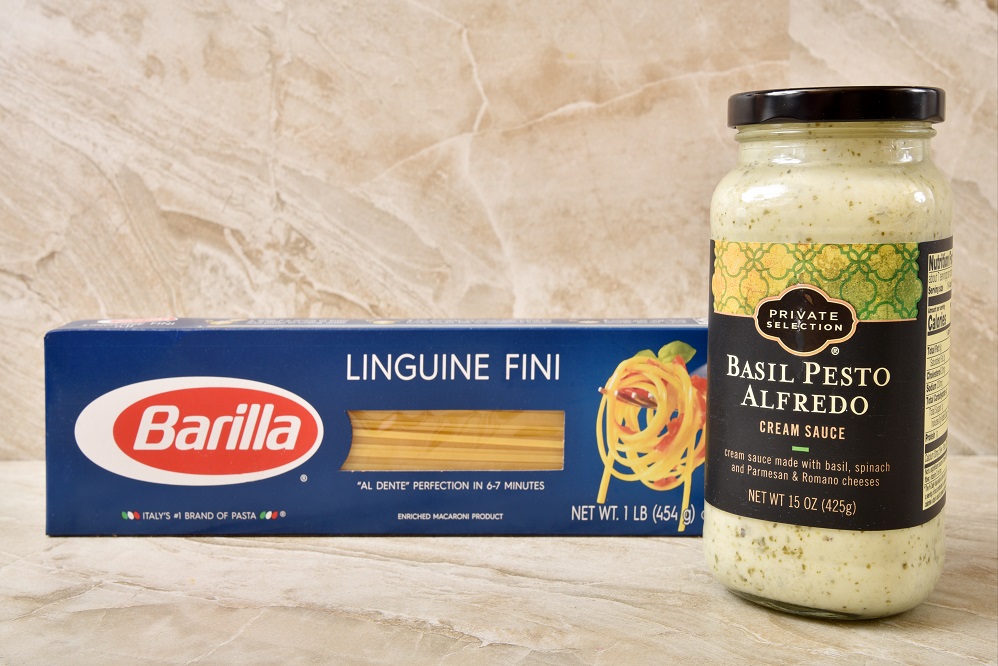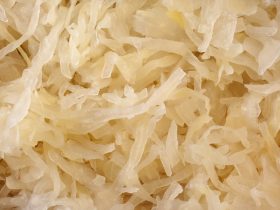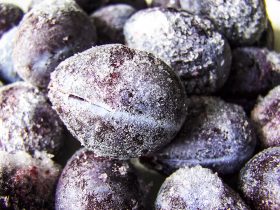Alfredo sauce is an American cream-based white pasta and pizza sauce inspired by Italy’s fettuccine al burro, a mixture of butter and Parmigiano-Reggiano cheese. Alfredo sauce made from scratch is typically made with heavy cream or half and half, butter, cheese (such as parmesan or mozzarella), and seasonings. In supermarkets, ready-made versions of the sauce can also be found. Others may opt for full cream milk in the absence of heavy cream with the addition of a thickener such as flour or cornstarch.
Since the sauce is high in dairy fat, it has a rather short useful life. However, Alfredo sauce can be made in large batches and kept in the freezer. Freezing Alfredo sauce is rather simple with basic guidelines to keep it from spoiling quickly and getting freezer burn. Alfredo sauce made with fresh ingredients will keep well in the freezer for up to 3 months. Fresh Alfredo sauce stored beyond three months may not be necessarily spoiled but will not have the same taste and texture as a fresh batch of sauce.
Alfredo sauce also has a high water content from dairy products and has the tendency to separate when stored. When frozen, the split ingredients may also turn into a light yellow color even after it has thawed; This is normal and just needs to be reheated and mixed until well incorporated.
Storing Freshly Cooked Alfredo Sauce
After cooking a fresh batch of Alfredo sauce, it is important to cool the sauce completely before storing it. Storing hot sauce directly in the freezer can compromise the quality of food already stored in the freezer. Ideally, freshly cooked Alfredo sauce should be cooled for about an hour before storing. On the other hand, Alfredo sauce should not be left out beyond two hours after cooling as bacteria begin to multiply in food rapidly after this time – rapidly shortening the shelf life of the dairy-based sauce.
When the Alfredo sauce is at room temperature, choose a freezer-safe container with an airtight lid to prevent the sauce from getting freezer burn. Heavy-duty freezer bags can also be used. Ensure that the bags are not overfilled since the sauce will expand as it freezes. Push out as much air as possible from the storage bag before sealing. It is best to fill the freezer bags with about an inch of sauce so that they will freeze quickly and can easily be stacked. Date and label the container(s) before storing it in the freezer.
It is also convenient to freeze the sauce in smaller batches so that Alfredo sauce will not go through multiple thawing and re-freezing cycles, which can also shorten its shelf life. The shelf life of the frozen Alfredo Sauce may also be shorter than three months if the fresh cream, butter, and/or cheese(s) used were near their expiry dates.
Ready-made Alfredo Sauce

Ready-made Alfredo sauce from a supermarket usually has a shelf life of 6 months to a year when unopened. These also freeze well and may stay fresh beyond three months compared to homemade Alfredo sauce. ‘
Since water expands as it freezes, Alfredo sauce stored in glass jars should be transferred to a plastic, freezer-proof container to prevent the jar from exploding in the freezer.
Homemade sauce made from processed ingredients may have a shelf life of up to six months in the freezer if stored well.
Thawing and Re-heating Alfredo Sauce
As mentioned earlier, water and fat separate in the freezer because the two components have different masses. Naturally, fat having a heavier mass will move towards the bottom of the container while the water will float on top. This will occur even though the heavy cream, half and half, or full cream milk is homogenized.
An airtight container not only protects the sauce from freezer burn but also prevents the Alfredo sauce from absorbing unwanted odors in the freezer. Cream, similar to milk, is prone to absorb odors from where it has been stored. It is also important to protect the sauce from any meat juices in the freezer. When thawing in the refrigerator overnight, keep the lid on the sauce to prevent odors and bacteria in the fridge from contaminating or altering the taste of the Alfredo sauce.
Alfredo sauce can be thawed at room temperature on the counter or overnight in the refrigerator. If the sauce is needed immediately, it can be thawed in the microwave in short segments to prevent the sauce from boiling. When fully thawed, the sauce can be mixed together to combine the water and fat. If the sauce is a bit runny, it can be thickened with some cornstarch diluted in water or with roux, a combination of equal parts flour and butter.
Refreezing Alfredo Sauce
Refreezing leftover sauce is okay as long as the sauce had not been left out too long after reheating. However, the refrozen sauce will not be as fresh as it originally was and will shorten its shelf life.
It is important to relabel the container if the Alfredo sauce will be refrozen and to ensure that the sauce is heated to at least 165 F – the food-safe temperature that kills any bacteria present in the sauce. However, it is best not to refreeze Alfredo sauce after it has been reheated and thawed because of the changes in quality, consistency, and taste.
If the Alfredo sauce has a rancid smell, and off-taste, or any clear signs of contamination such as mold, it should be thrown away. Consuming spoiled Alfredo sauce may result in diarrhea, stomach ache, or food poisoning.
Plant-based Alfredo Sauce
There are several plant-based Alfredo sauces that use plant-based milk or vegetable puree as their base. Generally, the absence of dairy may extend the shelf life of plant-based Alfredo sauce depending on the ingredients used.
For instance, the shelf life of non-dairy creamer is about 1 to 2 years. On the other hand, freshly made almond milk or cauliflower puree will have a significantly shorter shelf life of a few weeks to a few months.
The basis of freezing plant-based Alfredo sauce will depend on the shelf life of the most perishable ingredient. Follow the same freezing, thawing, and reheating steps as regular Alfredo sauce to maintain the best quality of the sauce.





Hi, I'm Dom
Dom Eats was started to help other people fall in love with food. While cooking can feel intimidating, it doesn't have to be.